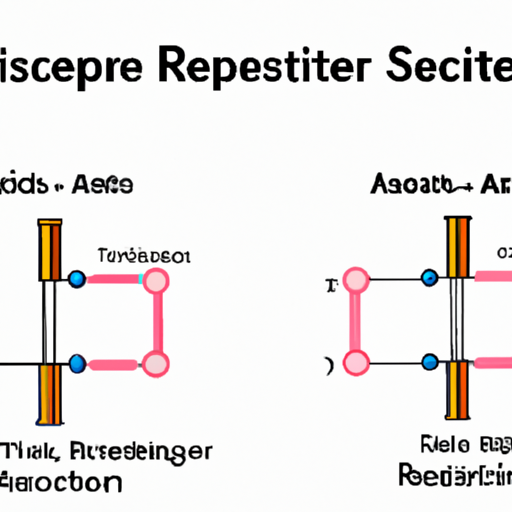Form: :
2024-03-25 04:18:07
0
Fixed resistors are electronic components that are used to limit the flow of electric current in a circuit. They are designed to have a specific resistance value that remains constant, hence the name "fixed resistor". These components are essential in various electronic devices and systems, as they help control the flow of electricity and protect other components from damage.In order to ensure the quality and reliability of fixed resistors, there are certain product standards that manufacturers must adhere to. These standards are put in place to guarantee that the resistors meet certain criteria for performance, safety, and durability. In this article, we will discuss the product standards for fixed resistors and why they are important.One of the most important product standards for fixed resistors is the resistance tolerance. This refers to the allowable deviation from the specified resistance value. For example, a resistor with a resistance value of 100 ohms and a tolerance of ±5% means that the actual resistance of the resistor can be anywhere between 95 ohms and 105 ohms. The tighter the tolerance, the more precise the resistor is in terms of its resistance value. Common tolerance values for fixed resistors include ±1%, ±5%, and ±10%.Another important product standard for fixed resistors is the power rating. This indicates the maximum amount of power that the resistor can safely dissipate without overheating or failing. The power rating is typically measured in watts and is determined by factors such as the resistor's size, construction, and material. It is important to select a resistor with a power rating that is suitable for the application to prevent damage or failure.In addition to resistance tolerance and power rating, fixed resistors must also meet certain standards for temperature coefficient, voltage rating, and reliability. The temperature coefficient specifies how the resistance of the resistor changes with temperature, while the voltage rating indicates the maximum voltage that the resistor can withstand without breaking down. Reliability standards ensure that the resistor will perform consistently over its expected lifespan without premature failure.One of the most widely recognized product standards for fixed resistors is the International Electrotechnical Commission (IEC) 60062 standard. This standard defines the color coding system used to indicate the resistance value, tolerance, and temperature coefficient of fixed resistors. The color bands on the resistor's body provide a quick and easy way to identify these parameters without the need for additional testing or measurement.In addition to the IEC standard, fixed resistors may also be subject to other industry-specific standards such as those set by the Institute of Electrical and Electronics Engineers (IEEE) or the Electronic Industries Alliance (EIA). These standards help ensure that fixed resistors are compatible with other components and systems, and that they meet the requirements of specific applications or industries.Overall, product standards for fixed resistors are essential for ensuring the quality, performance, and reliability of these electronic components. By adhering to these standards, manufacturers can produce resistors that meet the needs of their customers and perform consistently in a wide range of applications. Whether used in consumer electronics, industrial equipment, or automotive systems, fixed resistors play a crucial role in controlling the flow of electricity and maintaining the integrity of electronic circuits.

Form: :
2024-03-24 04:18:10
0
Color ring resistors are a type of resistor that is commonly used in electronic circuits to limit the flow of electric current. They are called color ring resistors because they have colored bands on their body that indicate their resistance value. These resistors are available in a wide range of resistance values and power ratings, making them suitable for a variety of applications.One of the key features of color ring resistors is their accuracy. The colored bands on the body of the resistor are used to determine its resistance value. Each color represents a specific digit, and by reading the colors from left to right, you can determine the resistance value of the resistor. This makes it easy to identify the resistance value of the resistor without the need for additional tools or equipment.Another important feature of color ring resistors is their reliability. These resistors are made from high-quality materials that are designed to withstand high temperatures and harsh operating conditions. This makes them suitable for use in a wide range of applications, including industrial and automotive electronics.Color ring resistors are also known for their stability. They have a low temperature coefficient, which means that their resistance value remains relatively constant over a wide range of temperatures. This makes them ideal for use in circuits that are exposed to varying temperatures, as they will not drift or change their resistance value significantly.In addition to their accuracy, reliability, and stability, color ring resistors also offer a high power rating. This means that they can handle high levels of current without overheating or failing. This makes them suitable for use in circuits that require high power handling capabilities, such as power supplies and amplifiers.Color ring resistors are also available in a variety of package sizes and configurations, making them easy to integrate into different types of circuits. They are typically available in axial lead packages, which are easy to solder onto circuit boards. They are also available in surface mount packages, which are ideal for use in compact electronic devices.Overall, color ring resistors are a versatile and reliable component that is essential for many electronic circuits. Their accuracy, reliability, stability, and high power rating make them suitable for a wide range of applications. Whether you are building a simple LED circuit or a complex audio amplifier, color ring resistors are an essential component that you can rely on to provide accurate and consistent performance.
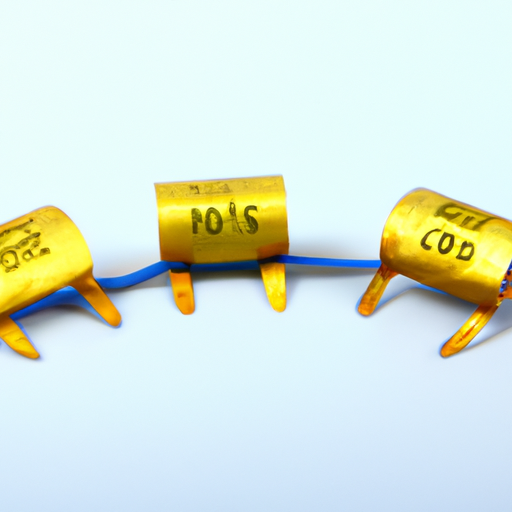
Form: :
2024-03-23 04:18:05
0
Brake resistors are an essential component in many industrial applications where braking of motors is required. They are used to dissipate the excess energy generated during the braking process, preventing damage to the motor and ensuring smooth operation of the machinery. In this article, we will explore the various product features of brake resistors and their importance in different industries.1. High Power Dissipation Capacity: One of the key features of brake resistors is their ability to dissipate high amounts of power. This is crucial in applications where the motor generates a significant amount of energy during braking, which needs to be safely dissipated to prevent overheating and damage to the motor. Brake resistors are designed to handle this excess energy efficiently, ensuring the smooth operation of the machinery.2. Compact and Space-saving Design: Brake resistors are typically compact in size, making them ideal for installations where space is limited. Their small footprint allows for easy integration into existing systems without taking up too much space. This feature is particularly important in industries where space is a premium, such as in manufacturing plants and industrial facilities.3. High Temperature Resistance: Brake resistors are designed to withstand high temperatures generated during braking. They are made from high-quality materials that can withstand the heat generated during the dissipation of energy. This ensures the longevity and durability of the resistor, even in harsh operating conditions.4. Fast Response Time: Brake resistors have a fast response time, allowing them to quickly dissipate the excess energy generated during braking. This ensures that the motor is protected from damage and that the machinery operates smoothly without any interruptions. The fast response time of brake resistors is crucial in applications where quick braking is required, such as in emergency stop situations.5. Easy Installation and Maintenance: Brake resistors are designed for easy installation and maintenance. They can be easily integrated into existing systems without the need for extensive modifications. Additionally, they require minimal maintenance, reducing downtime and ensuring the continuous operation of the machinery.6. Wide Range of Power Ratings: Brake resistors are available in a wide range of power ratings to suit different applications. Whether you need a small resistor for a low-power motor or a high-power resistor for a heavy-duty industrial application, there is a brake resistor available to meet your specific requirements. This versatility makes brake resistors suitable for a wide range of industries and applications.7. Cost-effective Solution: Brake resistors are a cost-effective solution for braking applications. They are relatively inexpensive compared to other braking systems and require minimal maintenance, reducing overall operating costs. Additionally, their high efficiency and reliability ensure that the machinery operates smoothly, reducing the risk of costly downtime and repairs.In conclusion, brake resistors are an essential component in many industrial applications where braking of motors is required. Their high power dissipation capacity, compact design, high temperature resistance, fast response time, easy installation and maintenance, wide range of power ratings, and cost-effective nature make them a popular choice for a wide range of industries. Whether you need to brake a small motor or a heavy-duty industrial machine, brake resistors are a reliable and efficient solution to ensure the smooth operation of your machinery.
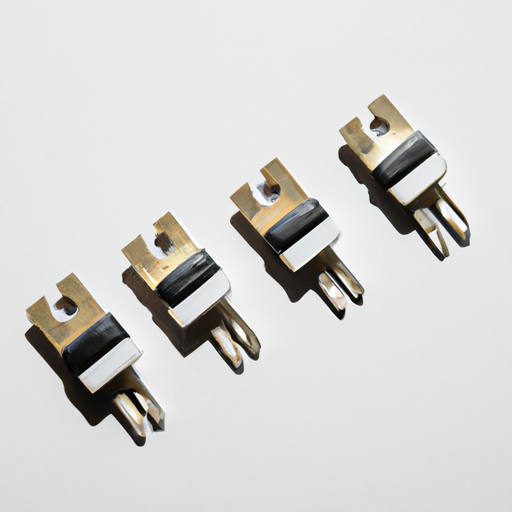
Form: :
2024-03-22 04:10:10
0
The release of a new standard resistor is a significant event in the world of electronics and engineering. Standard resistors are essential components in a wide range of electronic devices and systems, providing a known and stable resistance value for use in calibration, testing, and measurement applications. The development and release of a new standard resistor can have a major impact on industries such as telecommunications, aerospace, automotive, and more.The release of a new standard resistor is typically a carefully planned and coordinated effort involving manufacturers, standards organizations, and regulatory bodies. The process of developing a new standard resistor begins with the identification of a need for a new or updated standard, often driven by advances in technology or changes in industry requirements. Once the need has been identified, a working group or committee is formed to develop the new standard, taking into account factors such as resistance value, tolerance, temperature coefficient, and stability.The development of a new standard resistor can take several months or even years, depending on the complexity of the requirements and the level of consensus among stakeholders. Once the new standard has been finalized, it must undergo a rigorous testing and validation process to ensure that it meets the necessary performance criteria and can be reliably used in a wide range of applications. This testing process may involve comparison with existing standards, calibration against known reference values, and evaluation of long-term stability and reliability.Once the new standard resistor has been successfully validated, it is typically published by a recognized standards organization such as the International Electrotechnical Commission (IEC) or the American National Standards Institute (ANSI). The publication of a new standard resistor is often accompanied by a press release or announcement to inform the industry of its availability and significance. Manufacturers may also begin production of the new standard resistor, making it available for purchase by customers and users.The release of a new standard resistor can have a number of benefits for the industry and for end users. For manufacturers, the availability of a new standard resistor can open up new markets and opportunities for product development. For users, the adoption of a new standard resistor can improve the accuracy and reliability of their measurements and testing procedures, leading to better overall performance and quality in their products and systems.In conclusion, the release of a new standard resistor is a significant event in the world of electronics and engineering, with implications for a wide range of industries and applications. The development and release of a new standard resistor involves a careful and thorough process of testing, validation, and publication, ultimately leading to improved performance and reliability for users. The release of a new standard resistor is an important milestone in the ongoing advancement of technology and innovation in the field of electronics.
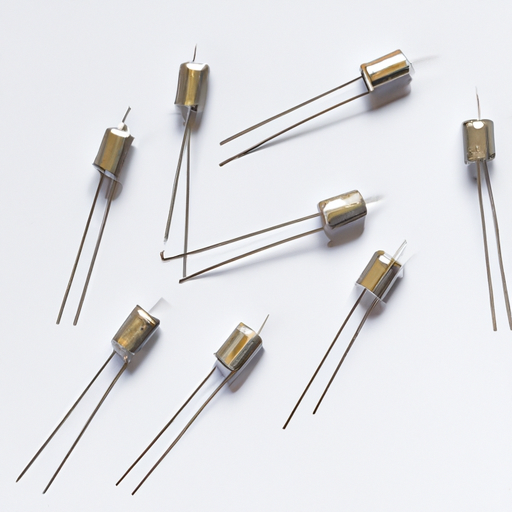
Form: :
2024-03-21 04:18:05
0
Pressure-sensitive resistors, also known as force-sensitive resistors or force-sensing resistors, are a type of sensor that changes its resistance based on the amount of pressure or force applied to it. These sensors are widely used in various industries for applications such as touch screens, medical devices, automotive systems, robotics, and more. As a result, there are important patents related to pressure-sensitive resistors in several key industries.One industry that contains important patents related to pressure-sensitive resistors is the consumer electronics industry. With the rise of touch screen technology in smartphones, tablets, and other devices, pressure-sensitive resistors have become essential components in these products. Companies like Apple, Samsung, and Google have filed patents for innovative touch screen technologies that incorporate pressure-sensitive resistors to improve the user experience. These patents cover aspects such as multi-touch functionality, pressure sensitivity levels, and gesture recognition, all of which rely on the accurate and reliable performance of pressure-sensitive resistors.Another industry that relies heavily on pressure-sensitive resistors is the automotive industry. Pressure-sensitive resistors are used in various automotive applications, such as airbag systems, seat occupancy sensors, and brake pedal sensors. These sensors play a crucial role in ensuring the safety and functionality of modern vehicles. Companies like Bosch, Continental, and Delphi have patented technologies that utilize pressure-sensitive resistors to improve the performance and reliability of these automotive systems. These patents cover areas such as crash detection algorithms, seat belt tensioning systems, and adaptive cruise control systems, all of which rely on the accurate measurement of pressure using pressure-sensitive resistors.The medical industry is another important sector that contains patents related to pressure-sensitive resistors. Pressure-sensitive resistors are used in medical devices such as blood pressure monitors, respiratory therapy devices, and prosthetic limbs. These sensors help healthcare professionals monitor and control various physiological parameters in patients, leading to better diagnosis and treatment outcomes. Companies like Medtronic, Philips, and Johnson & Johnson have patented technologies that incorporate pressure-sensitive resistors to improve the accuracy and reliability of these medical devices. These patents cover areas such as remote patient monitoring systems, drug delivery devices, and surgical instruments, all of which rely on the precise measurement of pressure using pressure-sensitive resistors.The robotics industry is also a key sector that relies on pressure-sensitive resistors for various applications. Pressure-sensitive resistors are used in robotic grippers, tactile sensors, and force feedback systems to enable robots to interact with their environment and perform tasks with precision. Companies like ABB, Fanuc, and KUKA have patented technologies that utilize pressure-sensitive resistors to improve the dexterity and sensitivity of robotic systems. These patents cover areas such as object recognition algorithms, force control mechanisms, and haptic feedback systems, all of which rely on the accurate measurement of pressure using pressure-sensitive resistors.In conclusion, pressure-sensitive resistors are essential components in a wide range of industries, including consumer electronics, automotive, medical, and robotics. Companies in these industries have filed important patents related to pressure-sensitive resistors to protect their innovative technologies and stay ahead of the competition. These patents cover various aspects of pressure-sensitive resistor technology, from touch screen functionality to automotive safety systems to medical devices and robotic applications. As the demand for pressure-sensitive resistors continues to grow, we can expect to see more groundbreaking inventions and patents in the future, further advancing the capabilities and applications of these versatile sensors.

Form: :
2024-03-20 04:26:11
0
Resistors are one of the most fundamental components in electronic circuits, and they play a crucial role in controlling the flow of current and voltage within a circuit. There are many different types of resistors available on the market, each with its own unique characteristics and applications. In this article, we will explore the differences between mainstream resistor models and discuss their respective advantages and disadvantages.One of the most common types of resistors is the carbon film resistor. These resistors are made by depositing a thin film of carbon onto a ceramic substrate, which is then coated with a protective layer. Carbon film resistors are inexpensive and widely available, making them a popular choice for many electronic applications. However, they are not as precise as other types of resistors, and their resistance can drift over time due to changes in temperature and humidity.Another popular type of resistor is the metal film resistor. These resistors are made by depositing a thin film of metal, such as nickel or tin, onto a ceramic substrate. Metal film resistors are more precise and stable than carbon film resistors, making them ideal for applications that require high accuracy and stability. However, metal film resistors are more expensive than carbon film resistors, which can be a limiting factor for some applications.One of the most advanced types of resistors is the thin film resistor. These resistors are made by depositing a thin film of metal, such as tantalum or nichrome, onto a ceramic substrate. Thin film resistors are extremely precise and stable, making them ideal for high-performance applications such as precision instrumentation and medical devices. However, thin film resistors are also the most expensive type of resistor, which can be a barrier to their widespread adoption.In addition to these mainstream resistor models, there are also specialized resistors that are designed for specific applications. For example, power resistors are designed to handle high levels of current and dissipate heat efficiently, making them ideal for power supply and motor control applications. Variable resistors, also known as potentiometers, are designed to allow the user to adjust the resistance value manually, making them ideal for applications that require variable control.Overall, the choice of resistor model depends on the specific requirements of the application. Carbon film resistors are a cost-effective option for general-purpose applications, while metal film resistors offer higher precision and stability for more demanding applications. Thin film resistors are the most advanced option, offering unparalleled precision and stability at a higher cost. By understanding the differences between these mainstream resistor models, engineers can select the best resistor for their specific application and ensure optimal performance and reliability.

Form: :
2024-03-19 04:30:06
0
Variable resistors, also known as potentiometers, are electronic components that allow for the adjustment of resistance in a circuit. They are commonly used in a variety of electronic devices such as radios, televisions, and amplifiers. Variable resistors come in different types and sizes, but they all serve the same purpose of controlling the flow of electric current in a circuit.The production of variable resistors involves several key processes that ensure the quality and functionality of the final product. In this article, we will explore the common production processes for variable resistors and how they contribute to the overall performance of these essential electronic components.1. Material Selection: The first step in the production of variable resistors is the selection of materials. Variable resistors are typically made of a resistive material such as carbon, cermet, or wirewound. The choice of material depends on the desired resistance range, power rating, and temperature coefficient of the resistor. Carbon composition resistors are commonly used for low-cost applications, while wirewound resistors are preferred for high-power applications.2. Resistor Element Formation: Once the resistive material is selected, the next step is to form the resistor element. This process involves depositing a thin film of the resistive material onto a substrate, such as a ceramic or fiberglass board. The resistive material is then patterned using photolithography or screen printing techniques to create the desired resistance value and tolerance.3. Trimming: After the resistor element is formed, it is often necessary to trim the resistance value to meet the specified tolerance. This can be done using laser trimming, mechanical trimming, or chemical etching techniques. Trimming ensures that the resistor's resistance value is within the required range and provides precise control over the resistance adjustment.4. Encapsulation: Once the resistor element is trimmed to the desired resistance value, it is encapsulated in a protective housing to prevent damage from external factors such as moisture, dust, and mechanical stress. The encapsulation material can be epoxy, plastic, or ceramic, depending on the application requirements. Encapsulation also helps to improve the resistor's stability and reliability over time.5. Terminal Attachment: The final step in the production of variable resistors is attaching the terminals to the resistor element. The terminals are typically made of copper or brass and are soldered or welded to the resistor element. The terminals provide the electrical connection between the resistor and the circuit, allowing for the adjustment of resistance using a knob or slider.Overall, the production of variable resistors involves a series of precise and controlled processes that ensure the quality and performance of these essential electronic components. By carefully selecting materials, forming the resistor element, trimming the resistance value, encapsulating the resistor, and attaching the terminals, manufacturers can produce variable resistors that meet the requirements of a wide range of electronic applications.In conclusion, variable resistors play a crucial role in controlling the flow of electric current in electronic circuits. The production processes outlined in this article are essential for ensuring the quality and functionality of variable resistors. By understanding these processes, engineers and manufacturers can design and produce variable resistors that meet the performance and reliability requirements of modern electronic devices.

Form: :
2024-03-18 04:26:06
0
Resistors are one of the most common electronic components used in a wide range of electronic devices. They are used to limit the flow of electric current in a circuit and are essential for controlling voltage and current levels. The resistor symbol is a standardized representation used in circuit diagrams to indicate the presence of a resistor in a circuit. In this article, we will explore the common production processes for resistor symbols.1. Design and Layout:The first step in the production process of a resistor symbol is the design and layout phase. This involves creating a digital representation of the resistor symbol using computer-aided design (CAD) software. The design must adhere to industry standards and specifications to ensure compatibility with other electronic components and circuit diagrams.During the design phase, factors such as size, shape, and color of the resistor symbol are determined. The symbol must be easily recognizable and distinguishable from other components in a circuit diagram. The layout of the symbol is also important to ensure that it fits seamlessly into the overall circuit design.2. Fabrication:Once the design and layout of the resistor symbol are finalized, the fabrication process begins. The fabrication of resistor symbols typically involves the use of specialized equipment and materials to create the final product. The most common fabrication methods for resistor symbols include:- Etching: In this process, a resistive material is deposited on a substrate, and a pattern is etched into the material using chemical etching techniques. This creates the desired shape and layout of the resistor symbol on the substrate.- Printing: Another common method for fabricating resistor symbols is printing. The resistor symbol is printed onto a substrate using techniques such as screen printing or inkjet printing. This method allows for high precision and accuracy in creating the resistor symbol.- Laser cutting: Laser cutting is a precise and efficient method for fabricating resistor symbols. A laser beam is used to cut the resistor symbol out of a material such as acrylic or metal. This method is ideal for creating intricate designs and shapes.3. Testing and Quality Control:After the fabrication process is complete, the resistor symbols undergo testing and quality control to ensure they meet industry standards and specifications. Various tests are conducted to verify the functionality and reliability of the resistor symbols. Some common tests include:- Resistance testing: The resistance of the resistor symbol is measured using a multimeter or other testing equipment to ensure it falls within the specified tolerance range.- Visual inspection: The resistor symbols are visually inspected for any defects or imperfections that may affect their performance. This includes checking for proper alignment, color consistency, and overall quality of the symbol.- Durability testing: The resistor symbols are subjected to various environmental conditions such as temperature, humidity, and vibration to assess their durability and reliability in real-world applications.4. Packaging and Distribution:Once the resistor symbols have passed all quality control tests, they are packaged and prepared for distribution to customers. The packaging of resistor symbols is important to protect them from damage during shipping and handling. Common packaging materials include plastic trays, blister packs, and anti-static bags.The resistor symbols are then distributed to electronic component distributors, manufacturers, and hobbyists for use in various electronic applications. They are typically sold in bulk quantities or as part of electronic component kits. Customers can also purchase resistor symbols individually for specific projects or repairs.In conclusion, the production processes for resistor symbols involve design and layout, fabrication, testing and quality control, and packaging and distribution. These processes ensure that the resistor symbols meet industry standards and specifications for use in electronic circuits. By following these production processes, manufacturers can produce high-quality resistor symbols that are reliable and efficient in controlling voltage and current levels in electronic devices.

Form: :
2024-03-17 04:10:10
0
Power resistors are essential components in electrical circuits, providing resistance to the flow of current and dissipating heat in the process. They are used in a wide range of applications, from simple electronic devices to complex industrial machinery. In this article, we will explore how power resistors work, their different types, and their various applications.Power resistors are passive electronic components that resist the flow of electrical current. They are designed to have a specific resistance value, measured in ohms, which determines how much current will flow through them when a voltage is applied. The resistance value of a power resistor is determined by its physical dimensions, material composition, and temperature coefficient.When a voltage is applied across a power resistor, a current will flow through it according to Ohm's Law, which states that the current is equal to the voltage divided by the resistance. The power dissipated by the resistor can be calculated using the formula P = I^2 * R, where P is the power in watts, I is the current in amperes, and R is the resistance in ohms.Power resistors are designed to dissipate heat generated by the flow of current through them. This heat is produced as a result of the resistance of the resistor, which causes energy to be converted into heat. To prevent overheating, power resistors are often designed with a high power rating, which indicates the maximum amount of power they can safely dissipate without being damaged.There are several different types of power resistors, each with its own unique characteristics and applications. Some of the most common types include wirewound resistors, carbon composition resistors, metal film resistors, and thick film resistors.Wirewound resistors are made by winding a resistive wire around a ceramic or fiberglass core. They are known for their high power handling capabilities and low inductance, making them ideal for high-power applications such as motor control and power supplies.Carbon composition resistors are made by mixing carbon particles with a binder material and forming them into a cylindrical shape. They are inexpensive and have a high tolerance for overloads, making them suitable for general-purpose applications.Metal film resistors are made by depositing a thin film of metal onto a ceramic substrate. They have a high level of precision and stability, making them ideal for precision instrumentation and audio equipment.Thick film resistors are made by depositing a thick film of resistive material onto a ceramic substrate. They are cost-effective and have a high power handling capability, making them suitable for a wide range of applications.Power resistors are used in a wide range of applications, from simple voltage dividers to complex power control circuits. Some common uses include voltage regulation, current limiting, load balancing, and temperature sensing.In voltage regulation applications, power resistors are used to drop the voltage across a circuit to a desired level. This is often done in power supplies to provide a stable output voltage for electronic devices.In current limiting applications, power resistors are used to limit the amount of current flowing through a circuit to prevent damage to components. This is often done in motor control circuits to protect the motor from overheating.In load balancing applications, power resistors are used to balance the load across multiple circuits to ensure that each circuit receives the correct amount of power. This is often done in power distribution systems to prevent overloading of individual circuits.In temperature sensing applications, power resistors are used as temperature sensors by measuring the change in resistance with temperature. This is often done in industrial machinery to monitor the temperature of critical components.In conclusion, power resistors are essential components in electrical circuits, providing resistance to the flow of current and dissipating heat in the process. They come in a variety of types, each with its own unique characteristics and applications. Whether used in voltage regulation, current limiting, load balancing, or temperature sensing, power resistors play a crucial role in ensuring the proper functioning of electronic devices and industrial machinery.
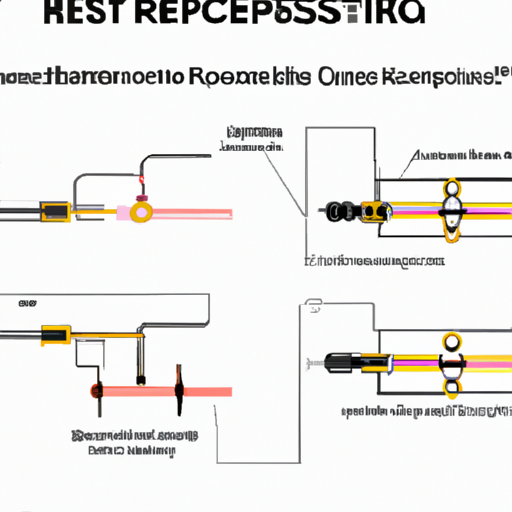
Form: :
2024-03-16 04:22:07
0
Adjustable resistors, also known as potentiometers or variable resistors, are essential components in electronic circuits that allow for the adjustment of resistance levels. These versatile devices are used in a wide range of applications, from volume controls in audio equipment to dimmer switches in lighting systems. As a distributor or manufacturer of adjustable resistors, it is crucial to provide comprehensive product training to ensure that customers understand how to properly use and install these components. In this article, we will discuss some key considerations for developing an effective adjustable resistor product training program.1. Understand the basics of adjustable resistorsBefore you can effectively train others on adjustable resistors, it is important to have a solid understanding of the basics yourself. Adjustable resistors are passive electronic components that have three terminals – two fixed terminals and one wiper terminal. By rotating a knob or slider, the resistance between the wiper terminal and one of the fixed terminals can be adjusted, allowing for precise control over the resistance level in a circuit.2. Identify common applicationsAdjustable resistors are used in a wide variety of applications, so it is important to identify the most common uses for your specific product line. Some common applications include volume controls in audio equipment, brightness controls in displays, and speed controls in motors. By understanding these applications, you can tailor your training program to address the specific needs of your customers.3. Provide hands-on demonstrationsOne of the most effective ways to train customers on adjustable resistors is to provide hands-on demonstrations. This can include showing customers how to properly install the resistor in a circuit, how to adjust the resistance level, and how to troubleshoot common issues. By allowing customers to interact with the product in a real-world setting, they will gain a better understanding of how it works and how to use it effectively.4. Address safety considerationsAdjustable resistors are relatively simple components, but it is still important to address safety considerations in your training program. This can include proper handling techniques, precautions for working with live circuits, and guidelines for preventing overheating or short circuits. By emphasizing the importance of safety, you can help customers avoid accidents and ensure the longevity of their adjustable resistors.5. Offer troubleshooting tipsEven with proper training, customers may encounter issues with their adjustable resistors. As part of your product training program, be sure to provide troubleshooting tips for common problems such as poor contact, noise or static, and erratic resistance levels. By equipping customers with the knowledge to diagnose and resolve these issues, you can help them get the most out of their adjustable resistors.6. Provide ongoing supportProduct training should not end after the initial purchase. To ensure customer satisfaction and loyalty, it is important to provide ongoing support for your adjustable resistors. This can include access to technical support staff, online resources such as FAQs and troubleshooting guides, and regular updates on new product features or improvements. By demonstrating your commitment to customer support, you can build trust and loyalty with your customers.In conclusion, developing an effective adjustable resistor product training program is essential for ensuring that customers understand how to properly use and install these components. By understanding the basics of adjustable resistors, identifying common applications, providing hands-on demonstrations, addressing safety considerations, offering troubleshooting tips, and providing ongoing support, you can help customers get the most out of their adjustable resistors and build long-lasting relationships with your customers.
